Dead Swing. Power Swing. Hike-Swing-Park. “Rif” Swing. Whatever you choose to call it, this single repetition kettlebell swing should be in your training toolbox. It’s equally fantastic as a corrective drill, a teaching tool for a great KB swing start, a method to develop max power for each rep of a swing, and an evil training technique.
The principle offers endless possibilities. One or two hands. Swings, cleans or snatches. However you choose to challenge yourself and your students, it is unforgiving of form faults and quickly highlights opportunities to plug power leakages.
Fixing a Hinge Challenge
I came up with the Dead Swing during a one-day course back in 2011. A student was having a very hard time getting back into a proper hinge position after the initial repetition’s kettlebell hike. He had no problem assuming the proper body position but would not re-load the hips after that first rep; instead reverting to shallow hinges or “mini” swings.
Mini swings are very upright, low force swings, often practiced by tentative beginners looking to “protect their back.” Because they haven’t yet learned, let alone felt, that all the power comes from the hips, not the spine, they try to escape hinging powerfully.
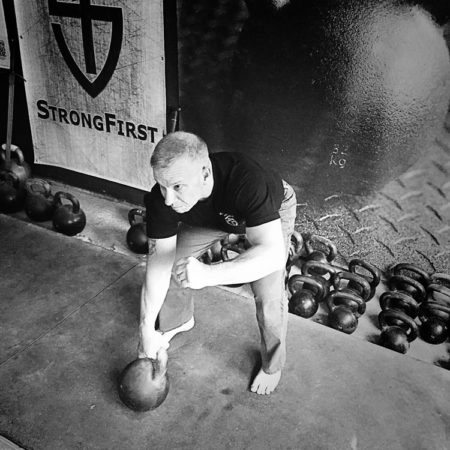 Usual correctives did nothing for this gentleman. But since he could do the first rep correctly, I asked him to repeat his successful first swings—replacing the bell back on the ground between each rep, BUT NOT STAND UP. Instead, he was to stay in the hike position, hands on the bell, hips loaded, and shoulders packed. On my command, he would hike, swing, and park a single rep.
Usual correctives did nothing for this gentleman. But since he could do the first rep correctly, I asked him to repeat his successful first swings—replacing the bell back on the ground between each rep, BUT NOT STAND UP. Instead, he was to stay in the hike position, hands on the bell, hips loaded, and shoulders packed. On my command, he would hike, swing, and park a single rep.
No problem. So I had him do two single rep swings followed by two continuous swings, focusing on re-hinging the hips. It worked! He learned by gaining confidence and feeling a good loaded hip position. No more mini swings.
He’s wasn’t the only one to benefit from this surprisingly simple, yet effective drill. But it wasn’t until my wife Tracy incorporated it into her swing classes that we realized how potent a training tool it was.
A Potent Training Tool
Tracy, of course, is known for her amazing swing training, emphasizing very high volume work. She immediately recognized that single rep swings were much harder than continuous swing work. She dubbed the drill “Hike-Swing-Park,” as those were her cueing instructions.
Having read a lot of kettlebell literature, I had never seen this variation before. I asked Pavel for his take on it, including Tracy’s video demonstrating the drill. Talk about back in the day. As always, his feedback was invaluable:
“I like the powerlifting mentality of making the first rep perfect and the constant drilling of properly picking up the bell, setting it down, and reloading the hips.
I would still mix this drill with sets of higher reps when teaching for fluidity. This variation has got to be very tough because the kinetic energy has dissipated (at least 35% more energy required, according to Supertraining), so I anticipate effective specialized variety workouts for any level of practitioner.“
Pavel’s observation that the drill required 35% + more energy felt right on target, especially when using it for sets and reps. I felt my spinal erectors and hips working hard; even more when done in conjunction with regular ballistic swing/snatch work. Single arm practice also rooted out weak lat involvement in the hike quite effectively. A brutal drill across the board!
His observation of the higher loads required to produce force reminded me of my powerlifting days. Specifically, using box squats to do the same thing: take the stretch reflex out. This required lifters to do more work to produce the same amount of force to stand up. When returning to traditional squats, the movement was easier AND more powerful. This swing variation seemed the same to me. So much so that I presented this ‘box squat of kettlebell swings’ to my powerlifting mentor and coach Louie Simmons. He loved the idea and asked for an article, which—to my great honor—was included in his book Special Strength Development for all Sports.
Build Strength and Power
The Dead Swing accomplishes the same goal as the box squat—interrupting the usual stretch-shortening reflex, making it much tougher to create the same rate of force development, or starting strength, as one would get from the ballistic action. This, of course, makes us stronger and more powerful, which is our overall goal.
Making its way into SFG certifications and the manual, we were still confused as to how to best name the single repetition swing. Pavel originally suggested the “Rif” Swing—I was honored, but too modest to claim it. Now I wish I had.
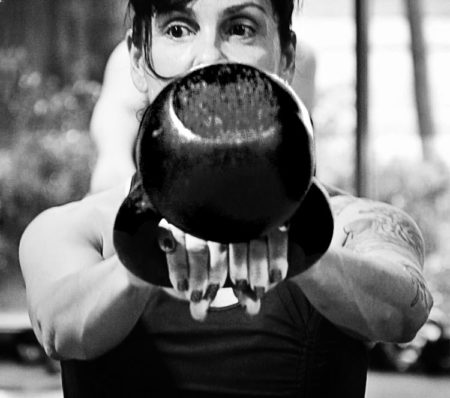 Fast forward to present day: and quantifying what we have traditionally measured by feel with a Push Band. The Push measures both velocity (in m/s) and Power (in watts) when doing all kinds of kettlebell movements. Just a cursory experiment with the band quickly highlighted my increased force output in the initial hike passes as compared to subsequent swings (in a continuous series). About 30% more watts than the rest of the set. Right about where Pavel thought the Dead Swing would pan out.
Fast forward to present day: and quantifying what we have traditionally measured by feel with a Push Band. The Push measures both velocity (in m/s) and Power (in watts) when doing all kinds of kettlebell movements. Just a cursory experiment with the band quickly highlighted my increased force output in the initial hike passes as compared to subsequent swings (in a continuous series). About 30% more watts than the rest of the set. Right about where Pavel thought the Dead Swing would pan out.
There are many ways to incorporate Dead Swings into your own or your students’ training practice:
- For beginners, it’s best used in the basic swing progressions, after you teach the hike, provided you can coach a sufficiently coordinated hip hinge. Otherwise, hold off until they have some confidence with the hike sequence, and use it to drill more explosion for each rep.
- It’s great as originally used, a corrective for those with shallow hinges or mini swings, essentially having problems reloading the hip in repetition swing sets.
- It’s also fantastic (and very tough) as a stand-alone session. Choose a single bell for sets and reps (3-5 reps per set seems right—this is NOT a high rep exercise) or a weight ladder where one can do 1-2 reps with specific bell then move up to the next weight and so on. Three weight changes works well. Be very careful to monitor fatigue with this as it ramps up fast!
Dead Swings also develop excellent static strength (a vital but often ignored component) in the start position, overloading the erectors, hips, hamstrings, and lats. It puts this start position under a serious microscope. This is especially true when done single arm. It’s a fantastic drill across the board and should be incorporated at every level of training kettlebell ballistic skills. It works just as well for cleans and snatches with single or double bells.
Enjoy!
All the power comes from the hips, not the spine. - Mark Reifkind Share on X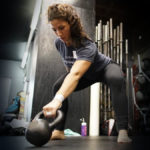
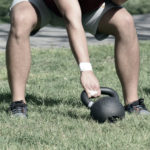
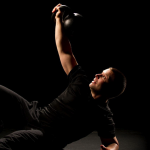
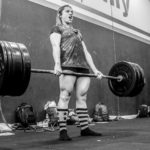

Superb article, Mark. I have been using the dead swing with great success with my students and it’s incredible at teaching the hinge after the first swing (yes, many people go shallow after that first one). It’s also great for drilling the hike and the parking of the bell, which again can be very sloppy if we move onto continuous swings right away.
I think it’s ingenious also because of the simple principle of repetition for locking in good habits. In a normal swing set, there’s only one hike and one park, which means that in the 5 sets of 10-rep swings there will only be 10 hikes and parks. If we make it 5 sets of 5 dead swings, that’s already 25 reps of hiking and parking.
It was very interesting to read about the story behind this great exercise. Thank you for contributing it into the world!
Great article Mark! I noticed and felt that my consecutive hinges after the initial hike are not the same (a video confirmed this). When I setup to grab the bell, I am much lower to the ground and I feel my hamstrings activated. The hinges that follow seem more shallow and I don’t feel my hamstrings as much.
I’m excited to implement dead swings (aka rif swings) into my practice!
8 sets x 3 reps = 24 reps High intensity. Most ideal for strength related goals. 6 sets x 4 reps = 24 reps High intensity. Most ideal for strength related goals.
Rif, thanks for bringing this to attention. Please could you tell us a little about the dead clean? Would it be advantageous over the swing clean for say a ladder or pyramid of Cleans & Presses with a 28/32KG?
Fantastic article coach! I’ll be incorporating the Dead Swing into my group kettlebell training tonight – thank you for the inspiration and knowledge as always.
Great article! One question though: Should the hinge remain as deep or should it be a little more shallow?
And what do you think about parking the bell on a slightly higher plattform?
Thank you for informative work 🙂
Thanks, glad you enjoyed it. Everyone’s hinge depth will vary on their individual anatomy. Their is an optimal depth for everyone; going deeper will lessen power not increase it.
For instance, I have a short spine,very long arms and relatively long femurs for a short guy. I don’t have to hinge very much to load my hips.
Someone build the opposite of me will most probably have to hinge more deeply than me to load their hips optimally.
The hips should be below the shoulders and above the knee in the bottom position with a neutral spine. Other than these considerations one must find their individual power position
hope this helps
Every time my swings feel weak, I return to the Dead Swing and the problem is fixed. Thanks Rif! I will call them Rifswings from now on. 😉
Good to hear they help and that’s so kind of you 🙂
imo, these as well as pendulum swings and hike pass drils HAVE to be in the practice of all beginners until they get this completely dialed in
Fantastic article. I’m a huge fan of dead stop swings (and breathing ladders which seem to have a build in dead stop component). Great to hear the reasoning behind the drill being “discovered” in the first place 😉
thank you ! that is much appreciated. It truly was a game changer for me as a coach
Used these especially with competitive athletes since Mark wrote his first article about them. Includes my snowboard racers and many martial artists. Power swings done as singles improves the hip hinge in ways other drills do not. Going to implement the one handed tonight!
thanks Eric and man, any one hand move with these is just so tough! But nothing cleans up the hike pass better as well as builds serious spine stability in the set up position
it also lets one see which lat isn’t doing it’s job 🙂
Fantastic article. I haven’t taken the Dead Swing drill off the shelf in a while, but will be reincorporating it back into my class program.
thanks and yes, it’s easy to forget about it once you can do it as 1) it’s just so freaking hard and 2) it’s just so freaking hard, lol.
The good news though is that it’s low reps and it’s good to go heavy!